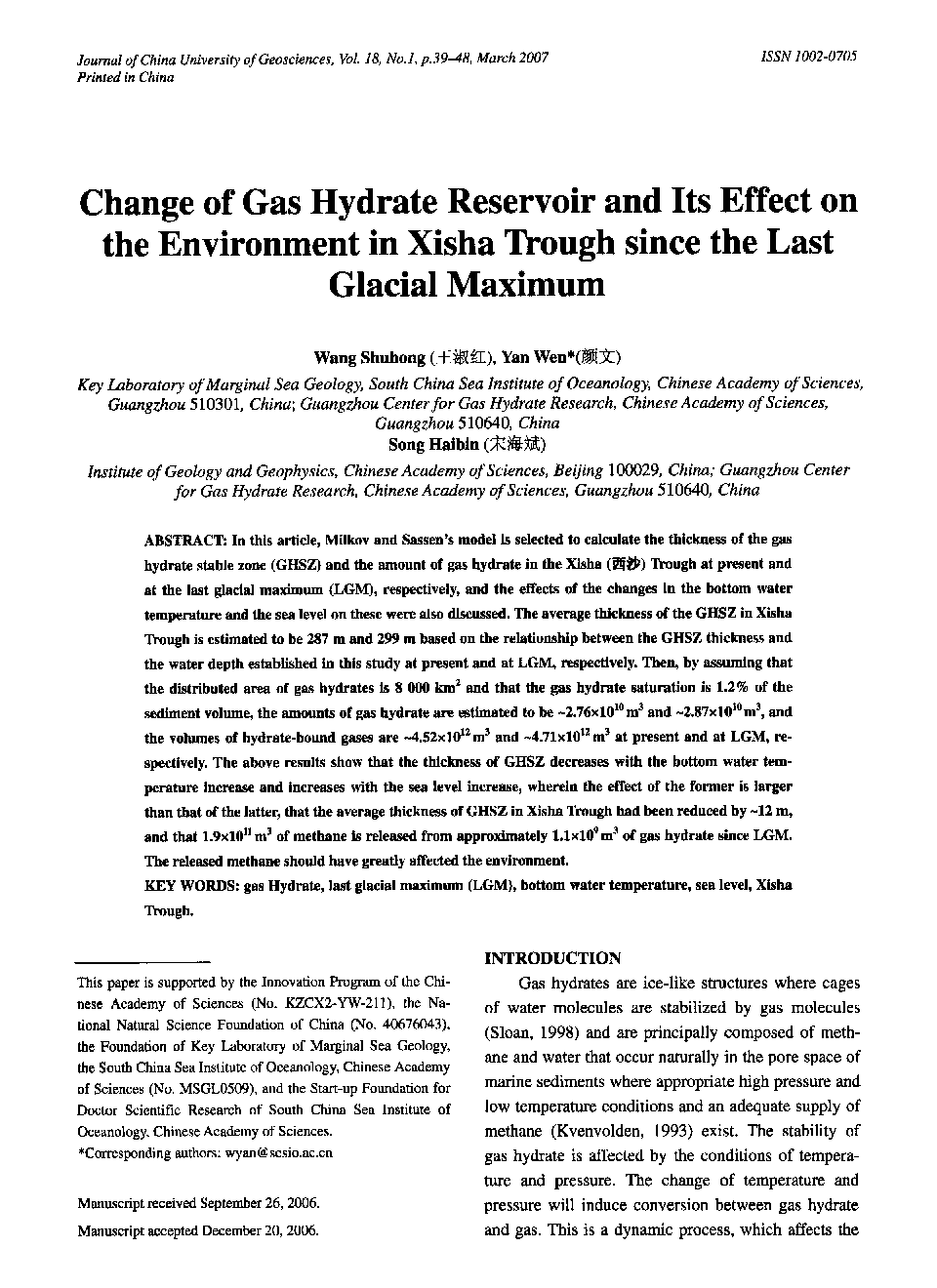| Article ID | Journal | Published Year | Pages | File Type |
|---|---|---|---|---|
| 4687843 | Journal of China University of Geosciences | 2007 | 10 Pages |
Abstract
In this article, Milkov and Sassen's model is selected to calculate the thickness of the gas hydrate stable zone (GHSZ) and the amount of gas hydrate in the Xisha () Trough at present and at the last glacial maximum (LGM), respectively, and the effects of the changes in the bottom water temperature and the sea level on these were also discussed. The average thickness of the GHSZ in Xisha Trough is estimated to be 287 m and 299 m based on the relationship between the GHSZ thickness and the water depth established in this study at present and at LGM, respectively. Then, by assuming that the distributed area of gas hydrates is 8 000 km2 and that the gas hydrate saturation is 1.2% of the sediment volume, the amounts of gas hydrate are estimated to be â¼2.76Ã1010 m3 and â¼2.87Ã1010 m3, and the volumes of hydrate-bound gases are â¼4.52Ã1012 m3 and â¼4.71Ã1012 m3 at present and at LGM, respectively. The above results show that the thickness of GHSZ decreases with the bottom water temperature increase and increases with the sea level increase, wherein the effect of the former is larger than that of the latter, that the average thickness of GHSZ in Xisha Trough had been reduced by â¼12 m, and that 1.9Ã1011 m3 of methane is released from approximately 1.1Ã109 m3 of gas hydrate since LGM. The released methane should have greatly affected the environment.
Related Topics
Physical Sciences and Engineering
Earth and Planetary Sciences
Earth-Surface Processes
Authors
Shuhong Wang, Wen Yan, Haibin Song,
